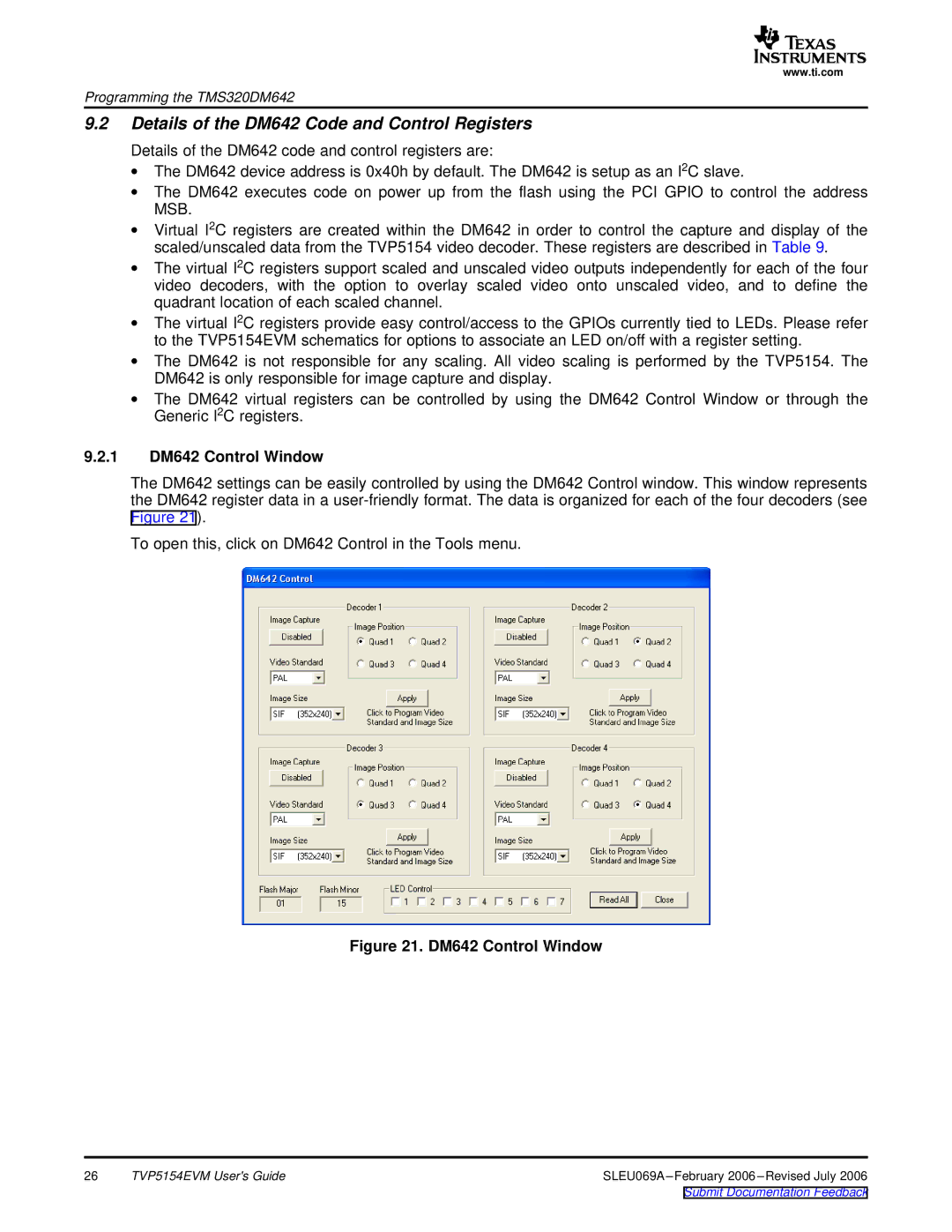
www.ti.com
Programming the TMS320DM642
9.2Details of the DM642 Code and Control Registers
Details of the DM642 code and control registers are:
∙The DM642 device address is 0x40h by default. The DM642 is setup as an I2C slave.
∙The DM642 executes code on power up from the flash using the PCI GPIO to control the address MSB.
∙Virtual I2C registers are created within the DM642 in order to control the capture and display of the scaled/unscaled data from the TVP5154 video decoder. These registers are described in Table 9.
∙The virtual I2C registers support scaled and unscaled video outputs independently for each of the four video decoders, with the option to overlay scaled video onto unscaled video, and to define the quadrant location of each scaled channel.
∙The virtual I2C registers provide easy control/access to the GPIOs currently tied to LEDs. Please refer to the TVP5154EVM schematics for options to associate an LED on/off with a register setting.
∙The DM642 is not responsible for any scaling. All video scaling is performed by the TVP5154. The DM642 is only responsible for image capture and display.
∙The DM642 virtual registers can be controlled by using the DM642 Control Window or through the Generic I2C registers.
9.2.1DM642 Control Window
The DM642 settings can be easily controlled by using the DM642 Control window. This window represents the DM642 register data in a
To open this, click on DM642 Control in the Tools menu.
Figure 21. DM642 Control Window
26 | TVP5154EVM User's Guide | SLEU069A |
